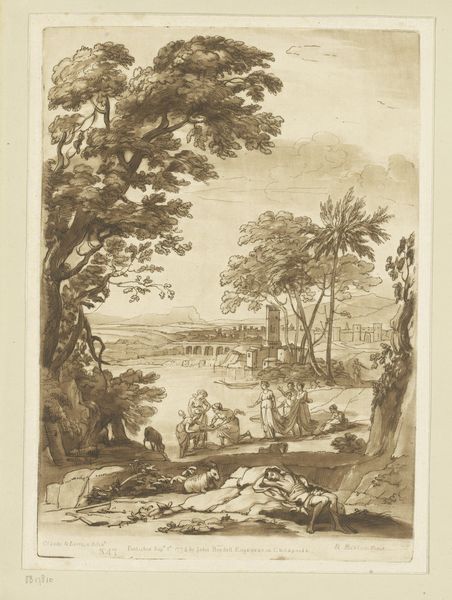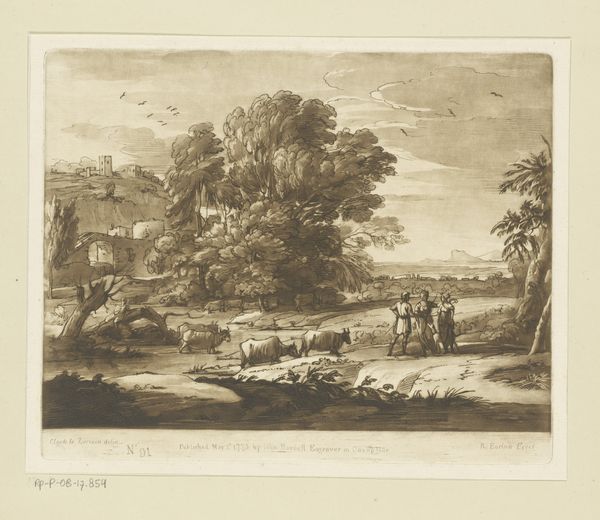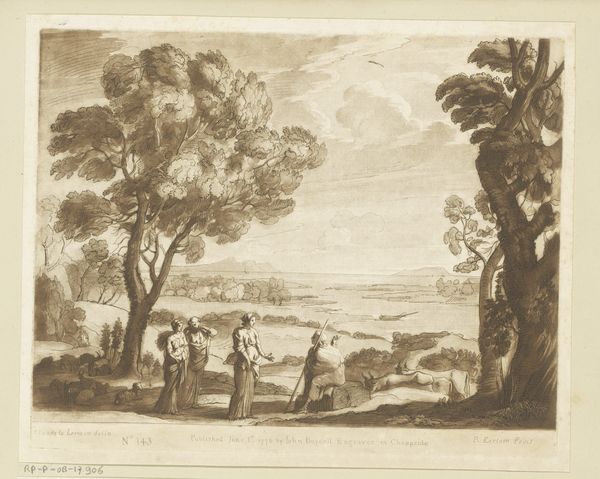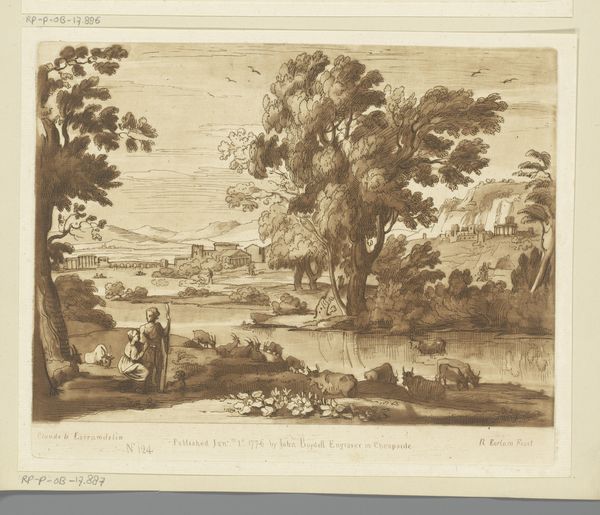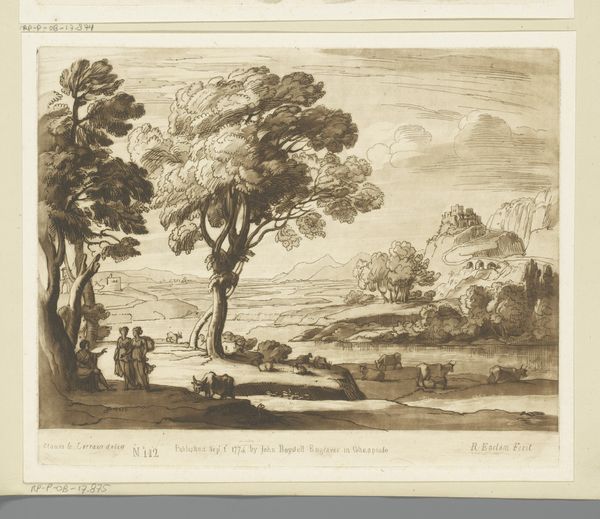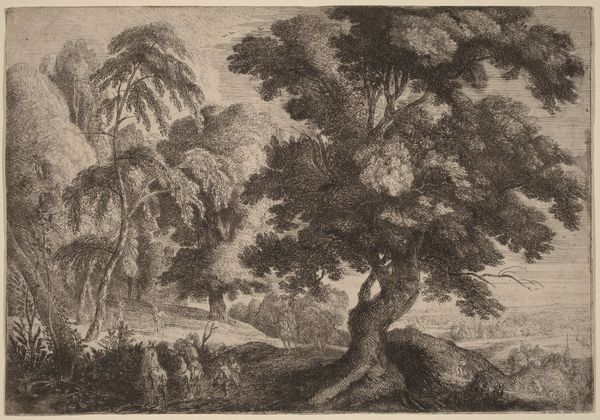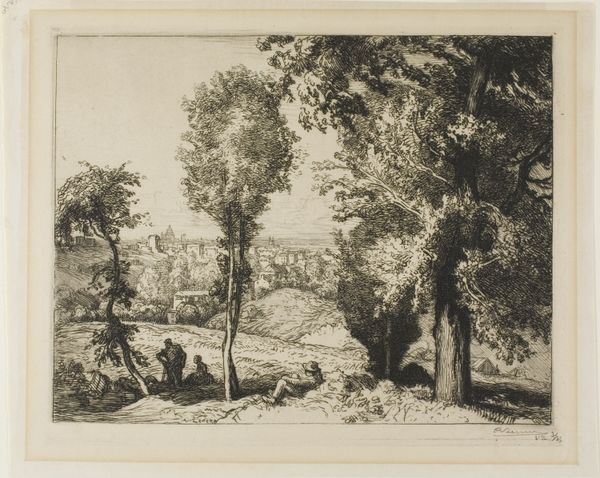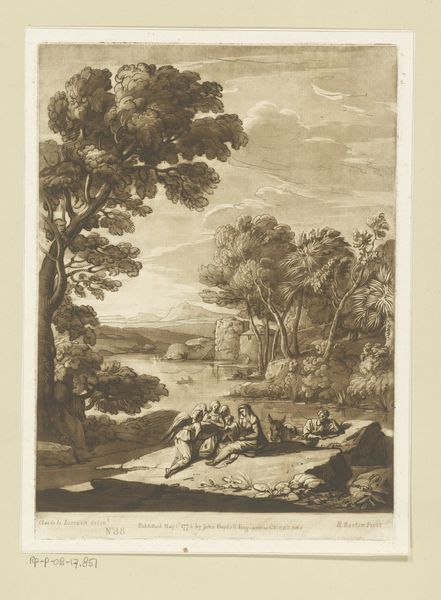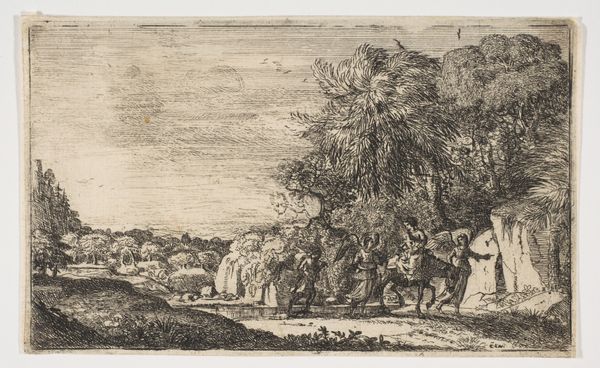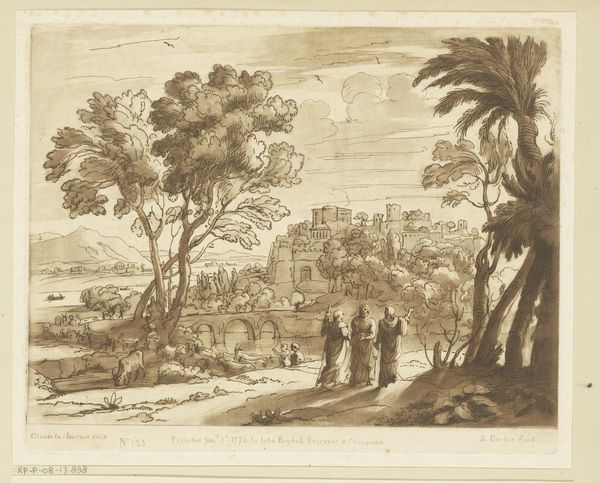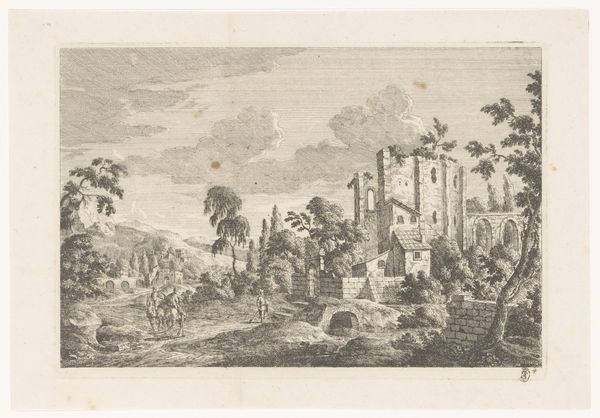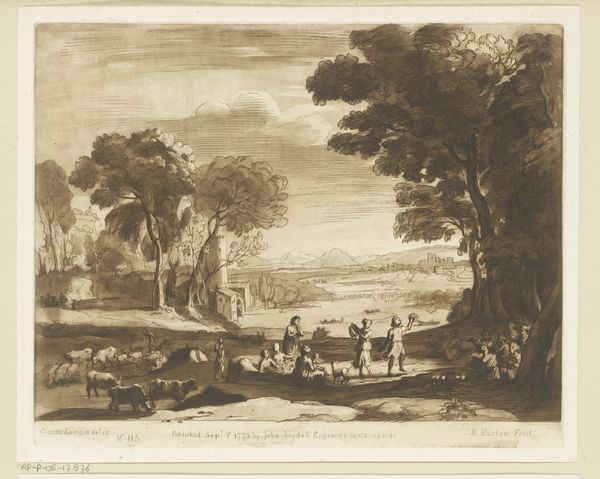
Landschap met Apollo en Mercurius, die de kudde van Admetus wegdrijft Possibly 1775
0:00
0:00
richardearlom
Rijksmuseum
Dimensions: height 274 mm, width 195 mm
Copyright: Rijks Museum: Open Domain
Richard Earlom created this etching, "Landscape with Apollo and Mercury driving away Admetus' herd," in 1776. The mythological scene is set in an Italianate landscape complete with herdsmen, classical ruins, and distant mountains. Earlom worked in London during a period when British artists looked to the European continent, particularly Italy, for inspiration and status. The Royal Academy had been founded just a few years earlier, in 1768, and was busy trying to establish a canon of great art, based on classical and Renaissance models. Apollo, the god of music and poetry, and Mercury, the messenger god, were obvious choices of subject matter for artists wanting to associate themselves with high culture and intellectualism. The landscape setting adds to the sense of classical harmony and order. To understand this work more fully, we might research the activities of the Royal Academy, the Grand Tour, and the market for prints like this one in 18th century London. By understanding the social and institutional context of the artwork, we can gain a richer appreciation of its meaning and significance.
Comments
No comments
Be the first to comment and join the conversation on the ultimate creative platform.
